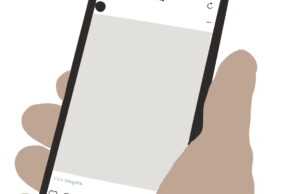Hate Crimes

A shock in the night
A vacant football field rests silently on campus as the students indulge in their seasonal, summer celebrations. Suddenly, a roar emerges from the campus PA. Rhetoric from an older time flows onto the football field, flooding the school and the nearby residential areas with a coarse, saline solution of hate and bitterness. Recently, these ideas have been given new life, almost single-handedly salvaged by a new wave of nationalism and isolationism in our nation’s ongoing political discourse.
Police soon received complaints from NPHS neighbors about loud music. The very next day, officers discovered that sound complaints from the day before were not because of intrusive and loud music.
The police are not entirely positive as to what it was, but “it did appear that it sounded like the voice of Hitler… I don’t understand the language so it was kind of hard for me to figure out what kind of speech it was. But it appeared that it was some kind of war speech,” Assistant Commander of the Thousand Oaks Police Department, Don Aguilar, said.
Hate crimes and hate speech have been around for centuries, with news outlets reporting on incidents of hate across the globe. However, several residents were shocked to find the hate they see on the news show up in their local community.
The Thousand Oaks area has experienced an increase in incidents involving hate since just last year. During this past summer alone, there have been three known hate incidents. A local grocery store, the Village Trader, found that someone painted a racial slur on the store wall. Additionally, another incident was caught on video: students from Westlake High School were caught saying derogatory terms about African Americans.
As soon as the video was posted on Twitter account @ExposingRacists9, several concerned students, including Westlake, Thousand Oaks, and Newbury Park students, messaged the account to recall their experiences with racial discrimination on campus.
Hate: Crime vs. Incident
While most incidents are investigated by the police, it is difficult to differentiate between hate crimes and hate incidents. “Hate crimes are crimes committed against people because of their race, religion, national origin or disability,” Aguilar said. “A hate incident, on the other hand, is something that doesn’t rise to the level of a specific victim of crime. In other words, if an incident happens where we see a painted swastika or something on the sidewalk, or fence, we really can’t determine who a victim is, because we can’t determine who it was directed to.”
However, police still fully investigate hate incidents. “We record those incidents in our records management system so we can go back and if we have a pattern of these or we get information that will lead us to maybe somebody who is committing a hate incident, we can follow with interviews and try to figure out what the genesis of the incident is, or who’s responsible for it,” Aguilar said.
While both are investigated thoroughly, hate crimes carry a loftier punishment, with culprits potentially facing a year of jail time. If the culprit committed a felony, which is a more serious offense than a misdemeanor or civil infraction, they could be sent to prison for even longer.
While no arrests or prosecutions are made for hate incidents, “there could be a million different ways to punish somebody. If it was a business, people could boycott the business. If it was an individual, and that person were to go to a college or go to a high school, maybe they could get expelled for that type of language. Or if it was an employee for a company, maybe they could suffer some penalty in terms of who their employer is,” Deputy Damien Ramirez of the Thousand Oaks Police Department said.
Why is it happening?
Although law enforcement and administration have been unable to identify exactly why these incidents are becoming more common, there are theories. “Crime is on the rise throughout the state, to my understanding. I just attribute that to the increase in everything else that’s going on,” Ramirez said, referring to the current political situation. “There’s different parts of the country with different parts of issues. I think in a society, we are always going to have these issues.” However, it is hard to get inside a perpetrator’s head to find out why they commit such crimes.
Craig Burritt, an involved member of the Dos Vientos community, believes that the reason for the painted slur on the wall of the Village Trader is “more of a reaction, a retaliation more to some kids that may have been scolded or caught stealing… kicked off the premises.” Through security footage, a video of a 17-year-old male was recovered and he was later arrested.
Steve Lepire, principal, tries to put himself into a perpetrator’s shoes when thinking about why hate crimes occur. “You know what they have been exposed to in their life, so it is hard. They believe certain things in a certain way.”
Willa Stonecipher, junior, believes that the current political climate is contributing to the increase. “I think President Trump has given the alt-right and white nationalists a pathway, and basically permission to speak their mind and propagate their cause.” Stonecipher said. “Ever since the presidential election, I have found two swastikas engraved on tables in the high school.”
Stonecipher had the swastikas removed from campus, but she still experiences similar episodes. In one instance, she was walking with a friend when she experienced verbal harassment from another peer.
“He said it was a dare and I just shot him a murderous look, but it bothered me for a while. Why would you think that’s ok? Even as a joke?”
When hearing about the hate incidents that have happened in the community, Stonecipher was shocked. “I’m feeling very disturbed and I don’t understand how as a community, a very diverse community, how this can happen.”
Social Media- How it contributes to hate crimes
140 characters and the message is out. Whether that message is a funny meme, breaking news or an inspirational quote, Twitter and other social media platforms allow millions to share their take on the world. With this ability also comes the ease for hateful platforms to spread their message.
“The issue with social media is the fact that you are able to take an incident and essentially broadcast it all over the world,” Ramirez said. “So in that sense, it’s made it easier to deliver a message of hate, and it’s made it easier to view those messages of hate.”
Social media also makes it easier for criminals to commit crimes. “The way people use technology today, criminal enterprises are very sophisticated crime offenders. We are very vulnerable to becoming victims of some type of crime,” Aguilar said.
However, social media also makes it harder for criminals to keep committing crimes. “Social media can be very powerful for law enforcement to connect with our citizens, who can help us fight crime. We try using our social media or technology with video footage, real time video coverage to try and apprehend crooks,” said Aguilar.
What is being done to prevent this from happening again?
Lepire puts an emphasis on security, hoping to “revamp our security cameras here on campus and to allow those to be an assistance when something happens on campus, so we have the potential to hold the person or people responsible for the incident.”
In response to the racial graffiti and other hate incidents, Burritt and others in Dos Vientos are hoping to create a neighborhood watch program. “We’re also trying to petition the
homeowner’s association so we could get them to reach out to the community (to hire) a private security patrol to monitor more during the nights and during the day.”
Both Burritt and Ramirez emphasize community involvement. “We’re trying to get as much community support as possible, trying to gather people’s email addresses so we can schedule meetings with the local police department and how we can proceed in the addition of signs that will go up and advertising the neighborhood watch,” Burritt said.
“These issues, law enforcement alone cannot solve these. These are societal issues. A lot of times we partner with other entities, private and public, to deliver educational messages,” Ramirez said. He also spoke about what parents can do to prevent their children from partaking in hateful behavior online. “People need to be more responsible with their children and what they allow them access to. And parents need to pay a little more attention to what their kids have going on. Children make poor decisions because they’re children, as much as they don’t want to hear that. But parents need to be able to guide their children and have conversations with their children and be open with their children and I think when parents are able to do that, we’ll be less apt to have these potential problems.”
Aguilar highlights the significance of police relations with the community. “Our relationship with the community is so important when it comes to hate crimes and hate incidents and we’re very fortunate to have great support from our city, great support from our citizens,” Aguilar said.
All together, Lepire believes that unity is key to preventing more of these incidents from happening. “We are a campus of over 2,400 kids. We do not expect everybody to be friends with everybody but what I do expect is for everybody to respect everybody’s space here on campus and their right to be here on campus,” Lepire said. “The most important thing to remember is that this is one person, one or two people doing something that does not define the school, it does not define the community. Unfortunately, people make decisions and choices and do things that we scratch our heads sometimes and wonder why they do that.”


